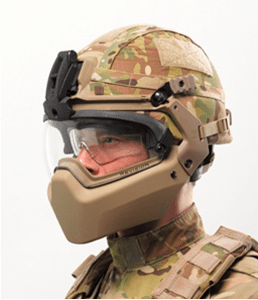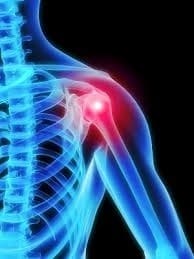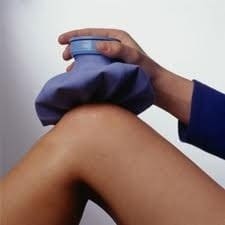In this weeks episode, Chip talks about MIL/LE restricted lasers.
In this weeks episode, Chip talks about MIL/LE restricted lasers.
Get all the “flair” off your gun… (Gratuitous “Office Space” reference)
If you’ve ever carried a load and walked the mountains, jungles, arctic or deserts…which covers being “anywhere”, you learned an axiom known by every SOF operator: after the first hour, every ounce feels like a pound. I see quite a few rifles with a lot of extra accessories that are completely unnecessary. While they fill a minor role, that role does not justify the added bulk, weight or adverse effects. I won’t name the ones I see as most offending but they should be self-evident after further evaluation based on the criteria below.
When evaluating and mounting accessories to a weapon system by function and location take into account the following so the rifle is in every regard as efficient and effective as possible:
Every accessory must:
1) Demonstrably enhance the effectiveness of the weapon
2) Not impede the use of bolt release, magazine release, safety or trigger or any other critical accessory like a flashlight
3) Have no negative effect on reliability
4) Be durable in the extreme
5) Not be prone to accidental activation/deactivation/release or entanglement with anything it will commonly come in contact with
6) Be accessible and operable while firing right or left handed (as ambidextrous as possible or necessary based on your skills and shooting style)
Every accessory must be simple to mount and remove and should be rigged so that the operator can easily strip the weapon for maintenance and return accessories to their original location. Side note: Paint markers are a tremendous help for marking location of accessories and screw tension.
When all else fails, get all the “flair” off your gun and start from scratch. Make sure every accessory on your rifle does something that truly needs doing…otherwise leave it in your extra parts bin.
-Mike Pannone
Mike Pannone retired from the Army’s premier assault force (1st SFOD-D) after an explosive breaching injury. A year after his retirement America was attacked on 9/11 and he returned to help serve his country as the head marksmanship instructor at the Federal Air Marshals training course and then moved to help stand up the FAMS Seattle field office. In 2003 he left the FAMS to serve as a PSD detail member and then a detail leader for the State Department during 2003 and 2004 in Baghdad and Tikrit.
In 2005 he served as a ground combat advisor of the Joint Counter IED Task Force and participated on combat operations with various units in Al Anbar province. Upon returning he gave IED awareness briefings to departing units and helped stand up a pre-Iraq surge rifle course with the Asymmetric Warfare Group as a lead instructor. With that experience as well as a career of special operations service in Marine Reconnaissance, Army Special Forces and JSOC to draw from he moved to the private sector teaching planning, leadership, marksmanship and tactics as well as authoring and co-authoring several books such as The M4 Handbook, AK Handbook and Tactical Pistol shooting. Mike also consults for several major rifle and accessory manufacturers to help them field the best possible equipment to the warfighter, law enforcement officer and upstanding civilian end user. He is considered a subject matter expert on the AR based Stoner platform in all its derivatives.
Gunfighter Moment is a weekly feature brought to you by Alias Training & Security Services. Each week Alias brings us a different Trainer and in turn they offer some words of wisdom.
Part 3 of the NRA Life of Duty series ‘Outlaw Platoon’, based on the book of the same name, is now available online.
In 2006 Lt. Sean Parnell and the men under his leadership, known as the Outlaw Platoon, deployed to one of the most dangerous areas of Afghanistan, less than 10 miles from the Pakistani border. Their mission was to disrupt and destroy this network at all costs – to seek out enemy positions and thwart the movement of insurgent forces into and out of the safe haven of Pakistan. After a year in some of the most intense combat imaginable in a 360-degree battlefield, the only thing Sean Parnell and his men wanted to do was survive.
nralifeofduty.tv/home/video/outlaw-platoon-part-three
Columbia, SC, August 28, 2013 – Responding to an active shooter scenario up till recently has been looked upon as only something law enforcement personnel would do. But often the first responder to an active shooter is the civilian that happened to be at the right place at the right time. Being able to respond sooner to an active shooter can save lives. In this video Paul Howe will prepare you for that.
Paul is a high-risk training instructor that served 20 years in the US Army, ten of those in Special Operations. He served as a Tactical Team Leader and Senior Instructor while assigned to Army Special Operations. During his tour in special operations he was involved in several combat actions. One of the most notable was the battle of Mogadishu that was later portrayed in the motion picture Black Hawk Down.
In this video, Paul takes you step-by-step through the mindset of an active shooter situation. He reviews gear you need like bags, holsters, and lights. The best choices for a weapon platform and medical supplies. Then Paul takes you through exterior contact, room CQB, hallways, hallway intersections, linking up with others, shooting through glass, and more. An active shooter event is a fact of life. Now you can be prepared.
The DVD is available for pre-order from the Panteao website. The video will be available streaming to Panteao subscribers shortly.
www.panteaoproductions.com/products/civilian-response
Montreal, QC, Canada (August 29, 2013)- Revision Military, a world leader in protective soldier solutions, will provide the Danish Defence Acquisition and Logistics Organization (DALO) with an additional 3,000 Batlskin Cobra Helmets during Q4, 2013. As part of the 7-year contract with Revision an initial 4,335 helmets have been supplied to date. Helmets from those first deliveries were issued earlier this year to infantry and head-quarters troops deploying to Afghanistan.

Returning soldiers reported that the Revision Batlskin Cobra helmet, an ultra-high-molecular-weight polyethylene shell that includes a high-performance Modular Liner System, ergonomic Retention System and multipurpose Front Mount, delivered high satisfaction levels with the vast majority of soldiers reporting very positively on the weight, comfort and protection offered by their new helmets. The fact that the helmets are lighter in weight, with a very comfortable and adjustable lining system, while providing blunt force, blast and ballistic levels of protection higher than previous helmets, was seen as an advancement and advantage.
“Revision is proud to have delivered helmets that have performed very well during rigorous use in-theatre and is looking forward to supplying additional Danish troops with these lightweight, high-performance polyethylene helmets” said Jonathan Blanshay, CEO of Revision. “The Danish military was among the very first to identify and realize the benefits that new materials and technology would bring to soldier protection, and the first to buy and deploy the Cobra polyethylene helmet system. Recognizing the Cobra helmet technology and performance would be under severe scrutiny during the Danish deployment, we are thrilled with the users’ positive reactions to their new equipment and ready to produce this next helmet order at Revision’s Composite Center of Excellence“.
Additional Danish troops will be recipients of the Batlskin Cobra polyethylene helmet with Revision’s adjustable retention system, high-performance modular liner, multi-purpose front mount, fitted helmet cover, and front rails for accessory attachment. With the Front Mount, the three-position Visor and high-threat Mandible Guard, components which were included in the initial contract award, can be used for additional facial protection.
Tactical Distributors is having a Labor Day sale. Save 20% off on all items store wide*, orders $200+ get free shipping. Sale lasts September 2nd through September 6th.
*some exclusions do apply
 Here at the International School House one of the common problems we face with our students are injuries from PT. Most are injuries to feet, knees and shoulders. No surprise, as these are the high use joints and muscles used in swimming and running. This isn’t an issue limited to international students, as many U.S. military people are injured everyday during PT sessions. The causes of these injuries aren’t as obvious as they might appear to be. You may think that its just a matter of poor conditioning. That is surely part of it, but I’ve seen many people that are in outstanding condition go down with an injury. Based on my own experience and observation (over many years) I think there are 4 main causes of PT injuries (not including the obvious like falling, misplacing a step, twisting an joint, etc)
Here at the International School House one of the common problems we face with our students are injuries from PT. Most are injuries to feet, knees and shoulders. No surprise, as these are the high use joints and muscles used in swimming and running. This isn’t an issue limited to international students, as many U.S. military people are injured everyday during PT sessions. The causes of these injuries aren’t as obvious as they might appear to be. You may think that its just a matter of poor conditioning. That is surely part of it, but I’ve seen many people that are in outstanding condition go down with an injury. Based on my own experience and observation (over many years) I think there are 4 main causes of PT injuries (not including the obvious like falling, misplacing a step, twisting an joint, etc)
1) Improper Warmup and Cool down: Jumping cold into an intense PT session without a proper warmup is a sure way to injure yourself. In my book Corps Strength, I outline a simple and effective warmup that properly transitions your body from a rested state into one that is ready for PT. This is an essential element in injury prevention. You can’t sell this process short, your body needs this transition. You also need to stretch out after PT, this also can go along way in preventing injuries as you are much better able to stretch throughly after PT when your body is warm. A better stretch will increase your range of motion, and more range of motion = less chance of pulling a muscle.
2) Over training: This is the most common cause of injury with people that are in good condition. Highly motivated people tend to always push themselves too far, I do this at least once a year. If you’re going to PT hard, you’ve got to give your body time to recover. Its that simple, listen to your body and take time off when you need it. Eating right is also part of this, if you don’t feed your engine with the right fuel, your body will run out of energy and the ability to recovery from an intense effort. A lack of appetite is a sign of overtraining.
3) Too rapid a progression: To get in top shape you have to gradually ramp up the duration and intensity of your routine. We all know this, however this needs to be gradual process. From my experience there are three stages to getting in shape. Toughening, Slow Improvement and Sustainment. Each stage takes about 30 days. getting you from poor to excellent condition in about 90 days. The problem arises when people think they can not exercise for months (or even years) then workout like a maniac for a few weeks and be in shape. Doesn’t work that way tough guy. You can only improve so much, so fast. Pushing that time frame will surely get you injured, or at least burnt out quick.
4) Monotonous routine: Doing the same thing, everyday will lead to injury. Do heavy bench presses, or run 10 miles everyday, and at some point your body will say enough. Your need variety to not only avoid injury but keep your body and attitude fresh and motivated. I’m a big believer in this, always have been, and I’m sure its helped me maintain a pretty intense, mostly injury free PT program for over 35 years.
 The bottom line is that you can’t 100% prevent injury if you PT hard on a regular basis. However you can minimize the frequency and severity of these injuries by using your head and following the basic tried and true principles of a solid PT program. Working hard to keep yourself in top condition is smart, breaking yourself before you even get to the fight is stupid. Good luck and be safe.
The bottom line is that you can’t 100% prevent injury if you PT hard on a regular basis. However you can minimize the frequency and severity of these injuries by using your head and following the basic tried and true principles of a solid PT program. Working hard to keep yourself in top condition is smart, breaking yourself before you even get to the fight is stupid. Good luck and be safe.
Semper Fi
MGunz